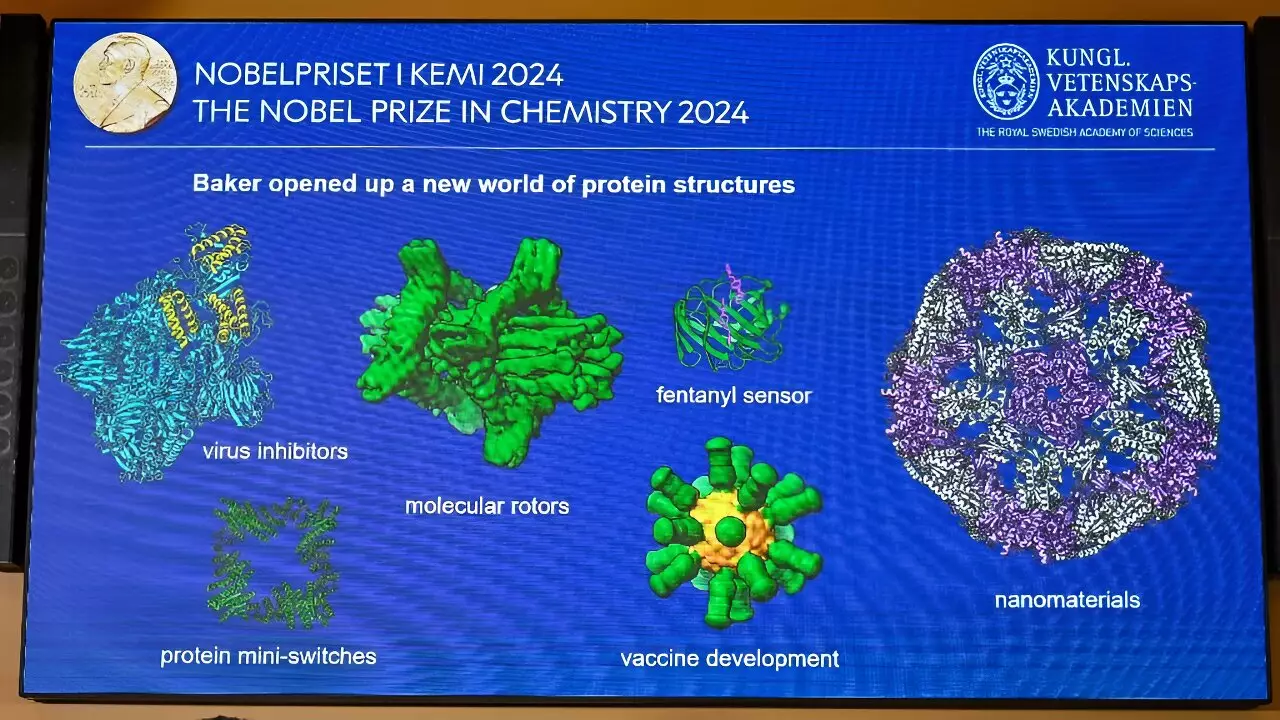The Nobel Prize in Chemistry has been awarded to a trio of innovative scientists who have significantly advanced our understanding of proteins, the fundamental building blocks that sustain all forms of life. This recognition highlights a transformative moment in biochemistry, as researchers harness artificial intelligence to unravel the complexities of protein structures, paving the way for breakthroughs in healthcare, environmental science, and beyond.
Proteins are often termed the “factories” within our bodies, responsible for a myriad of biological functions. They are constructed from twenty distinct amino acids, which sequence dictates their unique three-dimensional structures. This characteristic enables proteins to fulfill specific roles, from catalyzing biochemical reactions to providing structural support in cells. As Davide Calebiro, a protein researcher at the University of Birmingham, aptly stated, DNA serves as the blueprint, and proteins execute the design. However, the pathway from amino acid sequence to functional protein is complex and has stymied researchers for decades.
For many years, scientists endeavored to decode how linear sequences of amino acids fold into intricate three-dimensional configurations. American Chemical Society president Mary Carroll provided an allegorical comparison, likening this process to an old telephone cord that can stretch out in a straight line but snaps back into its coiled shape. Understanding this transition between two-dimensional sequences and their three-dimensional forms is vital for mastering protein functions.
Despite nature’s abundance of existing proteins, researchers often seek to create new proteins with functions that have yet to be explored. Efforts were hindered due to the challenge of predicting these structures accurately, as evidenced by the long-standing “Protein Olympics,” an event showcasing the difficulty of accurately predicting protein configurations. After years of extensive research and trial, it took the groundbreaking work of Demis Hassabis and John Jumper, pioneers at Google’s DeepMind lab, to make a significant breakthrough.
Embracing the power of artificial intelligence, they developed AlphaFold, a model trained on extensive datasets comprising known amino acid sequences paired with their corresponding protein structures. This AI tool excels in predicting how an uncharacterized amino acid sequence might fold into a functional protein, essentially providing an elegant solution to a complex problem. Following the success of AlphaFold2, which achieved remarkable accuracy in the Protein Olympics, the model now boasts predictions for nearly all 200 million proteins identified on the planet.
In a complementary yet distinct avenue of research, biochemist David Baker approached the protein challenge from a different angle. Rather than focusing solely on prediction, Baker’s method involved designing entirely new protein structures previously unseen in nature. Utilizing a sophisticated computational tool known as Rosetta, he navigated through the database of known protein structures to find segments that could serve as templates for the novel proteins he envisioned.
By honing in on particular structural characteristics, Rosetta proposed amino acid sequences expected to yield the desired new protein architecture. This innovative strategy opens up exciting possibilities, allowing researchers to create proteins tailored for specific tasks—an avenue that may lead to advancements in medicine, environmental sustainability, and even nanotechnology.
Mastering protein design and structure holds transformative potential across various scientific disciplines. As the Nobel Prize committee noted, ongoing research in this area can lead to significant insights into the mechanics of life itself, including understanding the onset of diseases, exploring antibiotic resistance, and delving into microbial interactions with plastics. The practical applications are vast, ranging from the development of targeted drugs and vaccines to the innovation of biodegradable materials aimed at mitigating environmental pollution.
Baker expressed his enthusiasm for a protein he designed during the COVID-19 pandemic, which aims to provide protection against viruses. His vision entails deploying nasal sprays containing engineered proteins capable of safeguarding against a range of pandemic threats. Such practical applications underscore the potential of this research to impact public health significantly.
Calebiro characterized these scientific achievements as the dawn of a new era in biochemistry, one where the boundaries of scientific understanding and technological innovation are continuously expanded. As researchers explore the potential of engineered proteins, the implications for science, health, and the environment are profound. With ongoing support and investment in this area of research, the contributions of Hassabis, Jumper, and Baker could usher in transformative changes, redefining our approach to life’s building blocks and their myriad possibilities.

